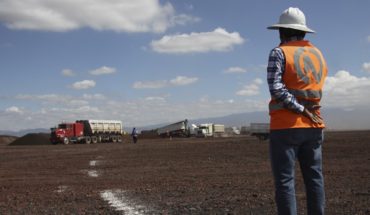Every December 3, since 1992, the International Day of Persons with Disabilities, declared by the General Assembly of the United Nations, is commemorated with the aim of promoting the rights and well-being of persons with disabilities in all areas of society, as well as raising awareness about their situation in all aspects of life.
The International Classification of Functioning, Disability and Health (ICF) understands functioning and disability as a dynamic interaction between health conditions and contextual factors, both personal and environmental. The promotion of a “bio-psychosocial model” represents a viable balance between medical and social models. The generic term “disability” encompasses all impairments, limitations to perform activities, and participation restrictions, and refers to the negative aspects of the interaction between a person (who has a health condition) and that person’s contextual factors (environmental and personal factors).
In the preamble to the Convention on the Rights of Persons with Disabilities, it recognizes that disability is an “evolving concept”, but also stresses that disability “results from the interaction between persons with disabilities and barriers due to attitude and environment that prevent their full and effective participation in society on an equal basis with others”. If disability is defined as an interaction, it means that disability is not an attribute of the person and therefore progress can be made to improve social participation by addressing the barriers that prevent persons with disabilities from participating.
In our country, Law No. 20,422, which establishes Norms on Equal Opportunities and Social Inclusion of Persons with Disabilities, defines that a “Person with a disability is one who, having one or more physical, mental, mental deficiencies, whether due to psychic or intellectual cause, or sensory, of a temporary or permanent nature, when interacting with various barriers present in the environment, is prevented or restricted from participating fully and effectively in society, on an equal basis with others.” In summary, temporary or permanent deficiency, added to a barrier present in the environment is equal to disability (impediment or restriction of full and effective participation).
According to the latest world report on disability by the World Health Organization, 15% of the world’s population experiences some form of disability, and the prevalence of disability is higher in developing countries. Thus constituting itself as the largest minority in the world and the one that experiences the most barriers in access to education and the labor market.
In Chile there are a total of 2,836,818 people with disabilities, of which 2,606,914 are adults (from the age of 18), that is, 20% of the national adult population has disabilities. This, according to the provisions of the latest National Disability Study (2015).
The figures of the last census indicate that 16.7% of the population of 2 or more years is in a situation of disability, that is, 2,836,818 people (INE, 2017). This figure reflects that, as at the global level, people with disabilities belong to a group that is not minor in our country and that it is essential not only to generate new regulations, but also to make their needs visible, through the testimonies of their protagonists, in order to achieve a change of cultural paradigm in which it is possible to eradicate charitable looks and myths around people with disabilities.
In August of this year, it was three years since the entry into force of Law 21,015 on Labor Inclusion, which states that companies with 100 or more workers must hire at least 1% of people with disabilities in relation to the total of their workers.
Statistics show that more than 2,600,000 people of working age have some form of disability. In this way, the impact of the regulations is fundamental and undoubtedly a significant advance in terms of inclusion. However, despite legislative advances, around 50% of people with disabilities of working age are now economically inactive.
Commemorating the International Day of Persons with Disabilities allows us, on the one hand, to recognize the progress that must be made.developed in legislative matters, but also to observe with a critical look the existing reality. We understand that labor inclusion is much more than an employment contract and that it implies a change of cultural paradigm, beyond the legal imperatives.
It is necessary, therefore, to move away from myths and stereotypes that have been assigned to people with disabilities, in addition to promoting a safe and respectful work environment that encourages non-discrimination for all workers, managing to reduce gender gaps and thus be able to continue advancing in public policies.
At the same time, the workplace is only one edge of the multiple challenges that lie ahead and that require the participation of society and community as a whole, but, above all, that of its protagonists: men, women, non-binary people, girls and boys with disabilities who, unfortunately, despite all the social advances, they are still excluded and excluded.
As an organization we reaffirm our commitment to social and labor inclusion for people with disabilities, emphasizing that it is a human rights issue that are universally recognized and ratified by our country in 2008, establishing its commitment to the Convention on the Rights of Persons with Disabilities, and whose purpose is to promote, protect and ensure the full and equal enjoyment of all human rights and fundamental freedoms for all persons with disabilities.
For this reason, in view of the upcoming presidential elections, we call on citizens, from a non-partisan position, to choose informedly and responsibly, for the consolidation of a democratic culture that respects human rights. We need to have a state that guarantees respect for diversity and equal opportunities led by a committed government that actively promotes these guarantees.
The content expressed in this opinion column is the sole responsibility of its author, and does not necessarily reflect the editorial line or position of El Mostrador.





